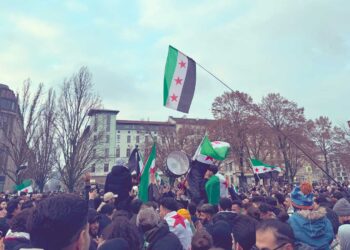Tomorrow, we meet—why is tomorrow so late?
Do you think it will not come, my love?
I watch you with each tick of the clock,
Arriving from afar, my love
Fairouz’s words caught me off guard—her voice piercing the heavy shadows of memory like a sudden shaft of light, perfectly synchronized with a video of Homs’s Clock Tower Square in an Instagram reel. Those brief twenty-one seconds were enough to reshape an entire archive of the last 13 years. Years that began with a revolution shaking the walls of silence, restoring our ability to hope—before it was all veiled in the fog of eternity, and its heartbreaks exploded across every horizon.
Suddenly, the ticking of the clock returned, transcending both time and sound. It pulled us inward, into the depths where we had buried our disappointments, our hopes, and a deep sorrow tinted by the futility of all things—no matter how dazzling on the surface—when measured against our shattered faith in justice, and the specter of ruin clinging to our souls. The voices of our disappeared, silenced in Assad’s slaughterhouses, still echo. Those prisons appeared to us as impenetrable and everlasting, despite everything we had documented, shared, written, screamed, and shown the world. Then came the chimes, gathering the scattered fragments of our souls, flooding them with feeling. It wasn’t just a fleeting glimpse of the past but a rupture, piercing the core of the spirit, dragging it through every station of pain and heartbreak—only to return it to one single moment: the now. To the lingering doubt that perhaps tomorrow has not been completely stolen from us, that the dreams, however shattered and dispersed, might yet find a way to gather and be reborn!
In those few seconds, my heart trembled, and my soul gasped for breath, as if the dream we had nearly forgotten could still return, could once again be our guiding compass—a sudden, magical moment after a long and relentless darkness.
December 7, 2024
How do I describe the taste of hope returning suddenly after years of forced absence—after we had taught ourselves to live without it, to accept its loss just to survive with what remained of us?
A few fleeting seconds in that reel were enough to stir a feeling I thought had vanished forever. It was more than hope—it was the return of tomorrow as a space for dreaming, for imagining, for waiting.
On this very day, the gates of Adra Prison opened. The same prison where, over years of captivity, my father wove me a beaded bag—bead by bead—as if stitching together a life in a time held captive.
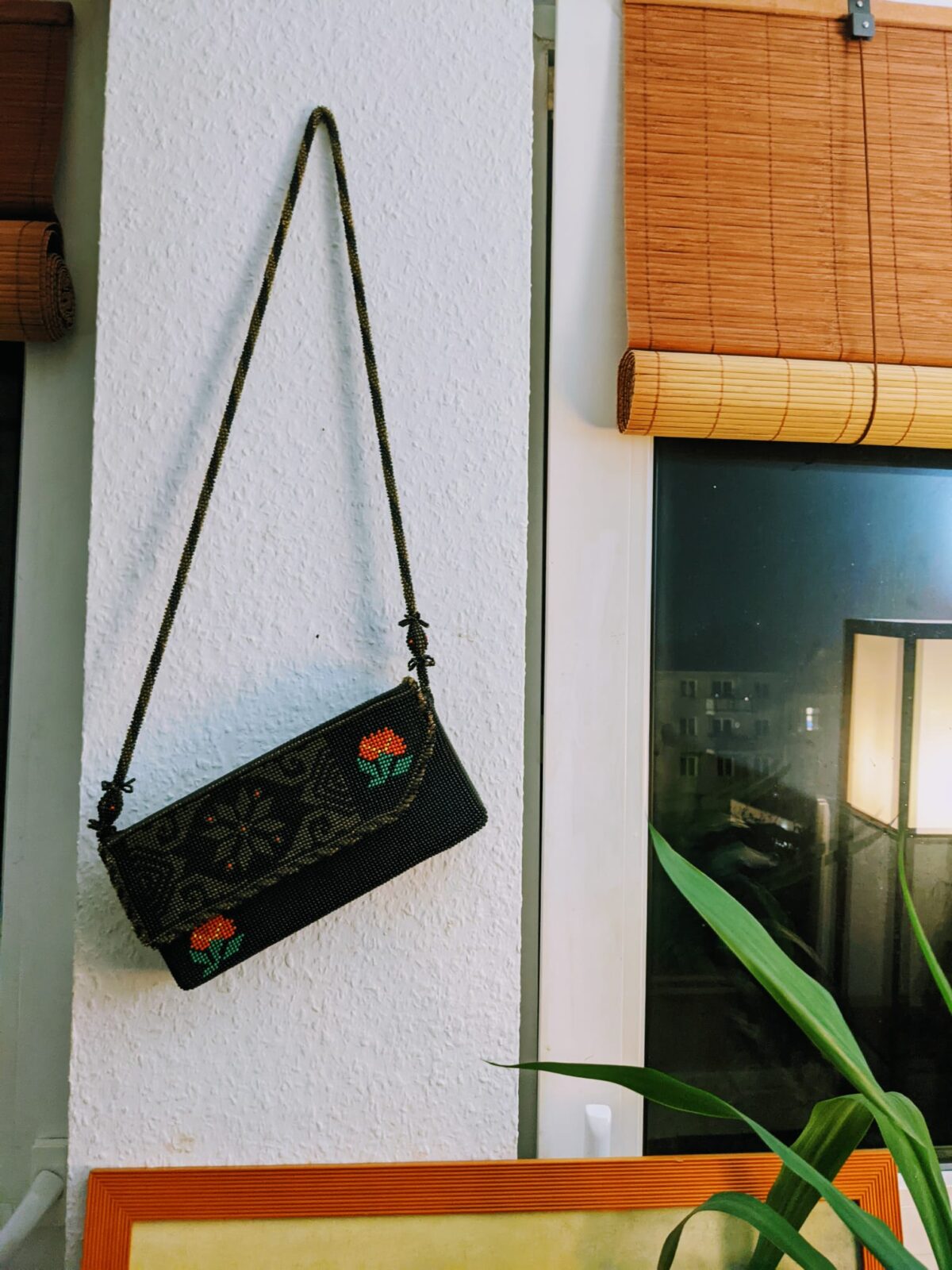
In the realm of the unforeseen,
where prison carves its borders like a blind sculptor,
life takes shape through sound—
an eternal ritual defying time’s barrenness.
But what is time, when it knows no edges?
Our memory, mother, is a hidden prison,
a void that devours the past,
carving hollows of forgetting.
Yet in its wakefulness,
life is reborn—and with it, a quiet rage,
spilling into poems,
into voices that carry us forward.
Mama, you taught me to weave rhyme with my body,
to dance when words abandoned me,
because voice rises from the body—
a typewriter translating pain into motion.
But why do our bodies remain silent now,
when we are more parched than ever for meaning?
No, mother, this silence is not the salt that preserves, as you used to say,
but the silence of a room thick with shadows—
stories trapped in cellars,
a room without light,
where time loses its threads.
Fear, mother, is the shadow of a coiled poem,
spinning without end, searching for a lost horizon.
And yet, beneath it, the voice remains—
a monument of light,
a will that draws us back to the beginning,
again and again.
Yesterday
The opposition factions declared their control over Aleppo and their advance toward other Syrian cities: Hama, Homs. I did not yet realize that tomorrow would be the day when, after decades, the archive of oppression, fear, dreams, and exile would be unearthed. A day when the Assad regime’s legacy of horror and destruction, still too vast to fully reckon with, would be laid bare. It would be a day no Syrian would ever forget.
We didn’t sleep that night. At that moment, the archive of all those years came alive—just like us. We recalled who we had been, before disappointment and the needs of survival overtook us, before our lived reality drifted away from our inner selves—deprived, wounded, and haunted by sorrow.
I have always been drawn to archives. I imagined them as extraordinary time-traveling machines, capable of crossing eras and geographies, gathering infinite worlds where emotions and perceptions converge. But what captivated me most was their relationship to loss: the loss of what was once familiar, cherished, longed for, only to become exiled, deferred, erased, or forbidden. Like a homeland, like my father in prison, like the memory of revolution and the dream itself.
When Assad and the Baath Party seized power in the early 1970s, ushering in what came to be known as Assad’s Eternity, a new phase of political and spatial monopolization began. A culture of submission and repression took hold, as the regime built an ever-expanding archive of fear—etched into our bodies, embedded in our daily lives, woven into our language—recycled and passed down through generations. This archive took many forms: the memory of the Hama Massacre in the 1980s, the prisons and detention centers, the imposed language of obedience, the Baathist indoctrination in schools that sought to shape the Syrian individual in the image of the regime. Then, at the turn of the millennium, a fleeting specter of hope appeared in the form of the Damascus Spring—a moment that quickly revealed itself to be a carefully laid trap, witnessing yet another betrayal of hope.
The Hour of Dreams and the Making of the Impossible
On March 15, 2011, the Syrian revolution erupted like a sudden flash of lightning, piercing the veil of silence and fear, forging the impossible. Despite the crushing weight of disappointment that later settled over the revolutionary dream, a new archive was born—one that was digital, spoken, and alive in ways unlike anything before it. It carried the faces and voices of the revolution, inscribing a memory that could never be erased. Homs’ Clock Tower Square bore witness to some of the most defining moments of this memory, in a city that carried titles like a mirror reflecting its people: Umm al-Faqir (Mother of the Poor), Umm al-Hijara al-Sawda (Mother of the Black Stones), the capital of humor and wit—until it earned yet another title: The Capital of the Revolution. That square held everything: a peaceful protest that turned into a massacre, then into a funeral and mass arrests, then into a sit-in, only to be followed by yet another massacre. The cycle of blood and siege rewrote tragedy into new scenes, replaying the same horror in different forms.
Clock Tower Square was more than just a place; it became a living symbol of the revolution, a pulse that reached into every rebellious neighborhood in Homs, every town and village that raised the banner of freedom. As A., a friend and activist from Al-Qusayr, recalled:
“After the Clock Tower Massacre, the regime tried to erase its traces from our collective memory. They banned us from gathering there, from demonstrating in its space. So, we said: If we cannot reach the Clock Tower, then let the Clock Tower come to us. And so, symbolic replicas of the square’s clock appeared in every revolutionary neighborhood”, like shattered fragments of Homs’ beating heart, scattered everywhere.
The songs of the revolution—and yours, mother—
carried us like the waves of the Mediterranean once did every summer,
before we arrived in Germany.
Rhythms bore our dreams, and the weight of forty years of silence,
holding us—both within our homeland and in exile.
Hope was a phoenix, a key,
carving waves of meaning into words.
On March 15, thirteen years ago, the clock struck zero,
marking the beginning of a future without end.
The voices of freedom wove the fabric of our being,
and let the voice break through—
in the kingdom of silence.
The Temporality of Siege
Amid the darkness of the siege that engulfed Homs’s opposition neighborhoods between 2011 and 2014, suffering was not the only story. The siege was more than just walls tightening around lives—it became a stage of resilience, a space where human creativity emerged in survival, resistance, and the pursuit of life, even as death loomed from every side.
In the besieged neighborhoods of Baba Amr, Khalidiya, and al-Qusour, life pulsed with scenes of solidarity and innovation. The struggle for survival unfolded in stories that refused to be confined by suffering alone, revealing moments of everyday resistance: a mother teaching the neighborhood children, youth building networks of mutual support, and laughter echoing in defiance of the shellfire.
The siege was not merely a tool of destruction—it was a test of the will to endure. As one resident of Homs described: “I don’t want to speak only of our suffering, but of the life we lived. Of our laughter, our solidarity, our attempts to stay alive.” To exist under siege was an act of resistance in itself—one that refused surrender and inscribed a new memory of the revolution, a memory that did not speak only of oppression but of the human spirit’s relentless fight to live.
The Green Buses… The End
One of the most searing scenes etched into memory was the evacuation of Homs’s residents from the besieged neighborhoods aboard the green buses—a moment pulsing with grief, betrayal, and despair.
As part of a 2014 agreement brokered under UN supervision, these buses carried the last opposition fighters out of Old Homs, sealing the regime’s full control. But the green buses became yet another symbol of a time when dreams were suffocated. Since 2011, the Syrian regime had used them to forcibly displace the people of Homs, after years of siege and relentless bombardment that had drained every last possibility of hope and survival.
The Tomorrow That Came After Eternity
On December 8, 2024, the Assad regime fell, ending 53 years of continuous repression. The impossible—the dream Syrians had carried for so long—had finally become reality. That day marked a turning point—a moment when Syrian history began to be rewritten. The people of Syria began to sketch a new image of hope, one that returned despite disappointment and deep fragility, pulsing once more in their hearts, no matter how far they had been scattered across the exiles of time, geography, and grief.
Today, the clock ticks again—this time as a symbol of freedom, of justice reclaimed, of a homeland being rebuilt. The revolution was never only against a dictatorship; it was also a struggle to reclaim stolen time. Its return was a rupture, a shock that reshaped both our existence and our memory. It was not just a moment in history—it was a bridge between past and future, a long-lost dream finally stepping into the present.
The Syrian Archive: A Guardian of Pain, Fragility, and a Window to the Future
The archive of the revolution is both a child of hope and its creator, brimming with urgency and awakening. Through documenting their revolution and preserving their lived experiences since March 15, 2011, Syrians have defied the temporal void that repression sought to impose. This archive—holding the stories of protests, political activism, detainees, massacre victims, and mothers who lost their children—is not just a record of the past. It was not just a reminder of the past, but a bet on another turn of the future.
The Death of Eternity and the Return of Time
I remember—
but my memory is not a bridge to the past.
It is a window opening onto a distant horizon.
The historian stands at a threshold,
not only to look back,
but to weave time into a tapestry—
a tapestry of hope entwined with sorrow,
fragments and shadows forming a space pulsing with meaning
for those who dare to dive into its depths.
Look at me—
yesterday, I was a prison for a tyrant,
a dusty mass of hollow words,
where the voices of the marginalized faded within my walls,
and their stories disappeared into my cells.
But today, I am the pulse rising from beneath the rubble,
a light tearing through the veil of darkness.
I am a video capturing a city breathing through ash,
an image distilling terror,
a voice gasping: “I am alive… I am here.”
I am a time machine no tyrant can possess,
open for all to see.
But is truth ever fixed,
when it is as fragile as those who speak it—
those who documented their revolution
to defy the abyss of forgetting?
“Why do you document?”
they asked the witnesses and the survivors.
And they answered:
A cry against oblivion.
A testimony before the world.
A mirror reflecting the unimaginable
in the face of the possible.
But documentation was more than a cry—
it was a quiet hope
that pain might one day bear justice,
that what was crushed today
would not vanish into the void of tomorrow.
I am the archive.
I do not merely preserve the past;
I carry a promise—
that the mothers who wrote farewell letters,
the children who painted the sky beneath falling bombs,
the elders who told the stories of Homs
will not disappear into the corners of oblivion.
They will not be swallowed by silence.
I am not a repository of yesterday’s remains—
I am the beginning of what is possible,
a space where the narrative is reclaimed,
where justice is reborn
from the wombs of pain.
This text was written prior to February 2025 and is part of the dossier “Eternity Unwoven,” curated by Veronica Ferreri and Inana Othman.


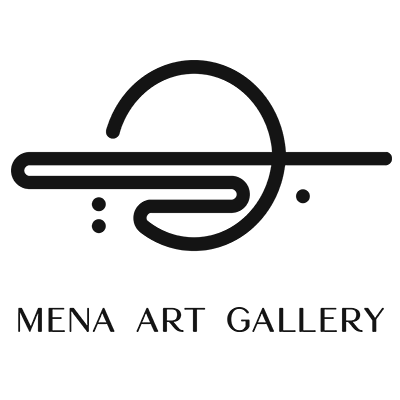
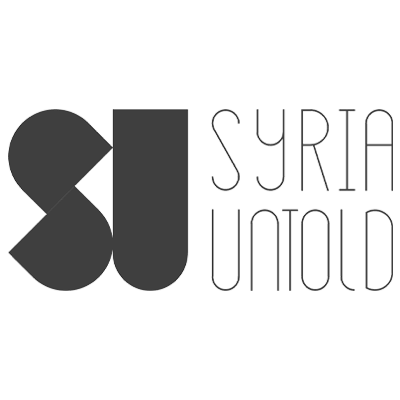


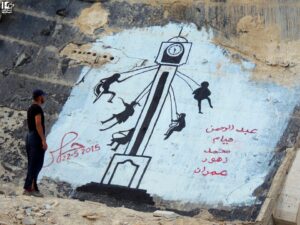
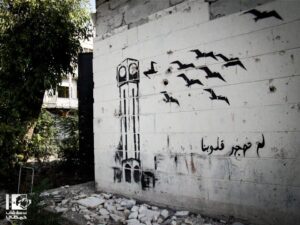
 This project has received funding from the European Union’s Horizon Europe Resarch and Innovation Programme under the Marie Sklodowska-Curie grant agreement No. 101064513 “ARCHIVWAR – Archives in Times of War: Scattered Families and Vanishing Past in Contemporary Syria.”
This project has received funding from the European Union’s Horizon Europe Resarch and Innovation Programme under the Marie Sklodowska-Curie grant agreement No. 101064513 “ARCHIVWAR – Archives in Times of War: Scattered Families and Vanishing Past in Contemporary Syria.”  Funded by the European Union. Views and options expressed are however those of the author(s) only and do not necessarily reflect those of the European Union or the European Execute Agency. Neither the European Union nor the granting authority can be held responsible for them.
Funded by the European Union. Views and options expressed are however those of the author(s) only and do not necessarily reflect those of the European Union or the European Execute Agency. Neither the European Union nor the granting authority can be held responsible for them.

